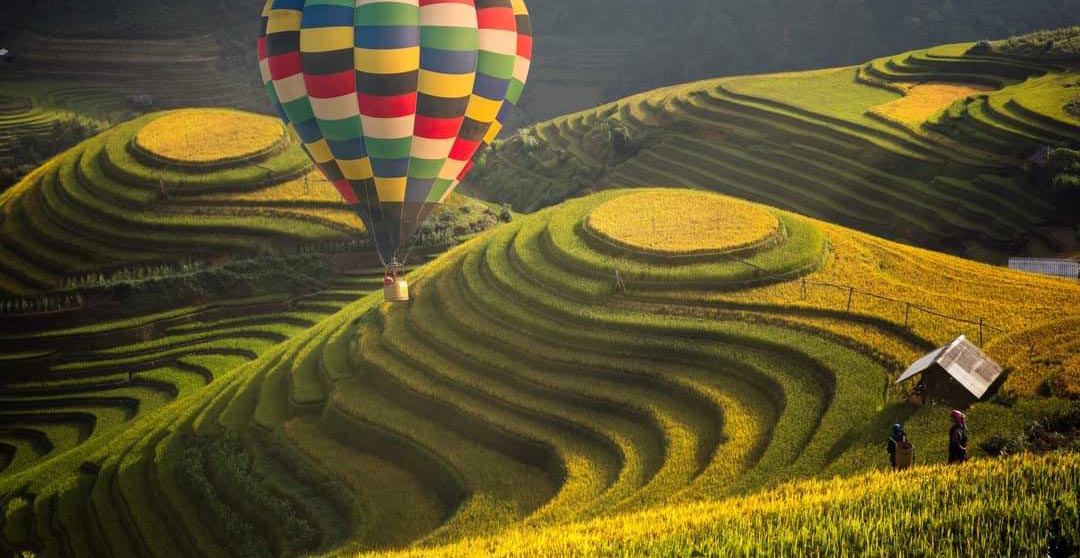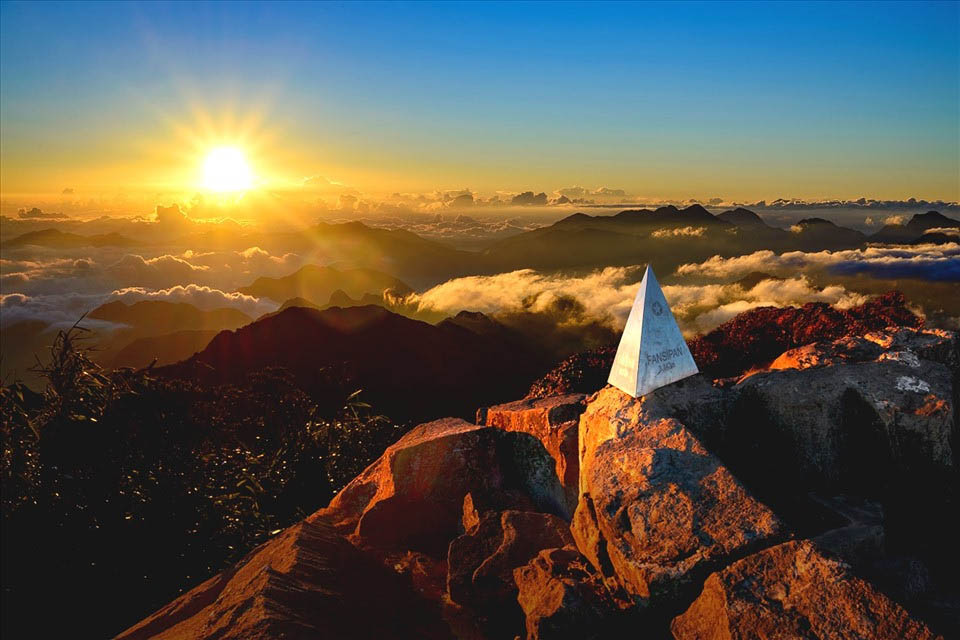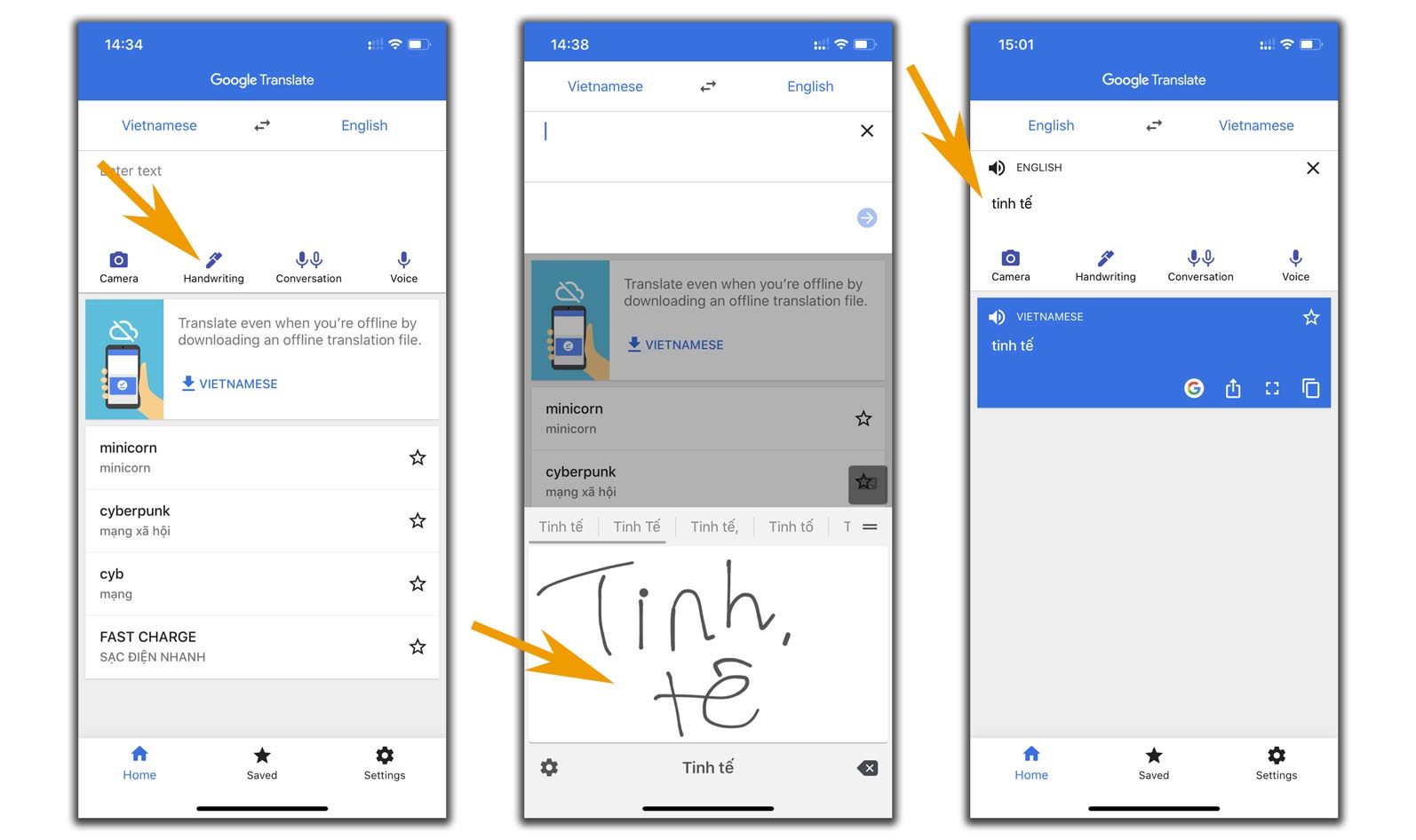Why Hiking in Vietnam
-
Stunning Landscapes: Vietnam has diverse and breathtaking scenery. You can choose from various routes such as mountains, rice terraces, caves, islands, etc.
-
Rich Culture: Along the hike, you can observe traditional Vietnamese village life and interact with friendly ethnic locals.
-
Unique Wildlife: Vietnam's tropical climate supports incredibly diverse flora and fauna. The country is renowned for many types of langurs and bird species.
-
Challenging Trails: Dirt paths, steep climbs, and rugged terrain, this untamed beauty attracts many adventurous hikers.
-
Historical Sites: In addition to natural beauty and local life, some trekking routes pass through historical or spiritual sites to stop by.
-
Pleasant Climate: Vietnam enjoys mostly mild and comfortable weather conditions for hiking throughout the year.
-
Affordability: Hiking in Vietnam is typically budget-friendly, with reasonable costs for guides, accommodations, and meals along the way.
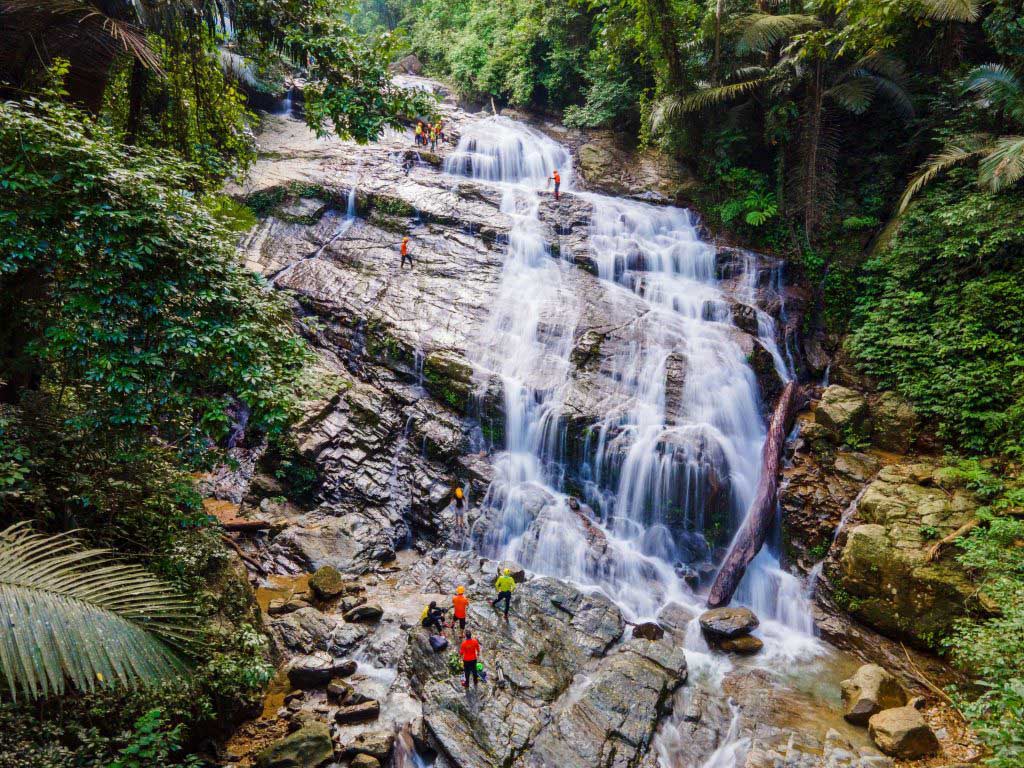
Why choose Vietnam for hiking?
Best Hiking Routes
Here are the top 6 captivating hiking destinations in Vietnam that visitors should try. Each trail will showcase distinct features for hikers to explore and enjoy.
Sapa
Sapa is a highland region in Northwest Vietnam. The highlights of this destination are witnessing the terraced rice fields nestled in lush valleys, enjoying the sight of waterfalls and streams, and meeting indigenous ethnic minorities.
Famous hiking trails in Sapa:
-
Fansipan Peak: Hike to conquer the roof of Indochina
-
Lao Chai - Ta Van Village: Wander amidst terraced rice fields and visit ethnic minority villages.
-
Love Waterfall - Y Linh Ho Trail: Enjoy the view of waterfalls and overlook the Muong Hoa Valley with its terraced fields.
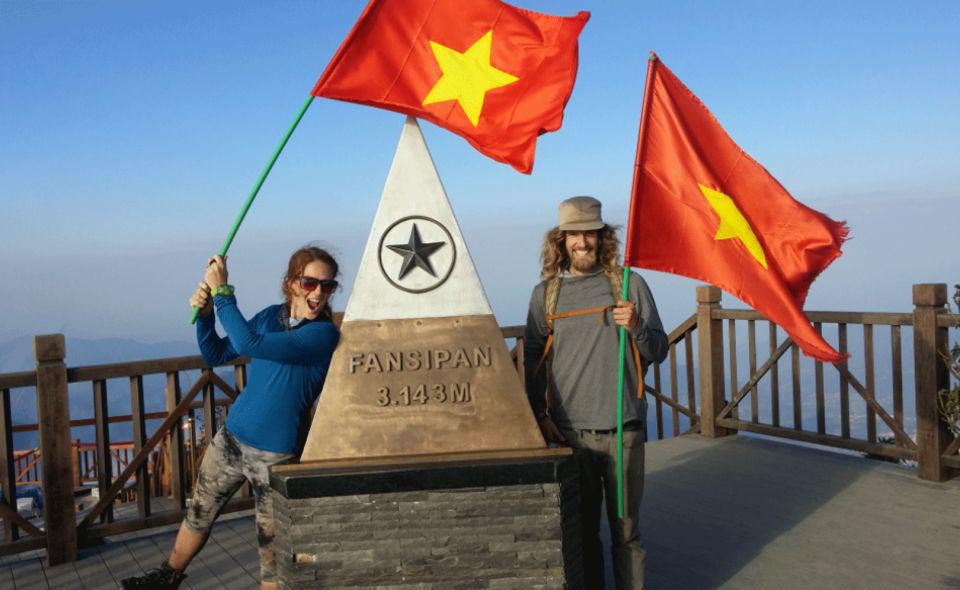
From the top of 3,143m Fansipan
Ha Giang
While Sapa is famous for its vibrant and serene natural scenery and people, Ha Giang offers a much wilder and rugged beauty. Known as the plateau where flowers bloom on rocks, the Northernmost point of Vietnam is characterized by its steep rocky mountains, deep valleys, vast forests interspersed with terraced fields, and traditional villages.
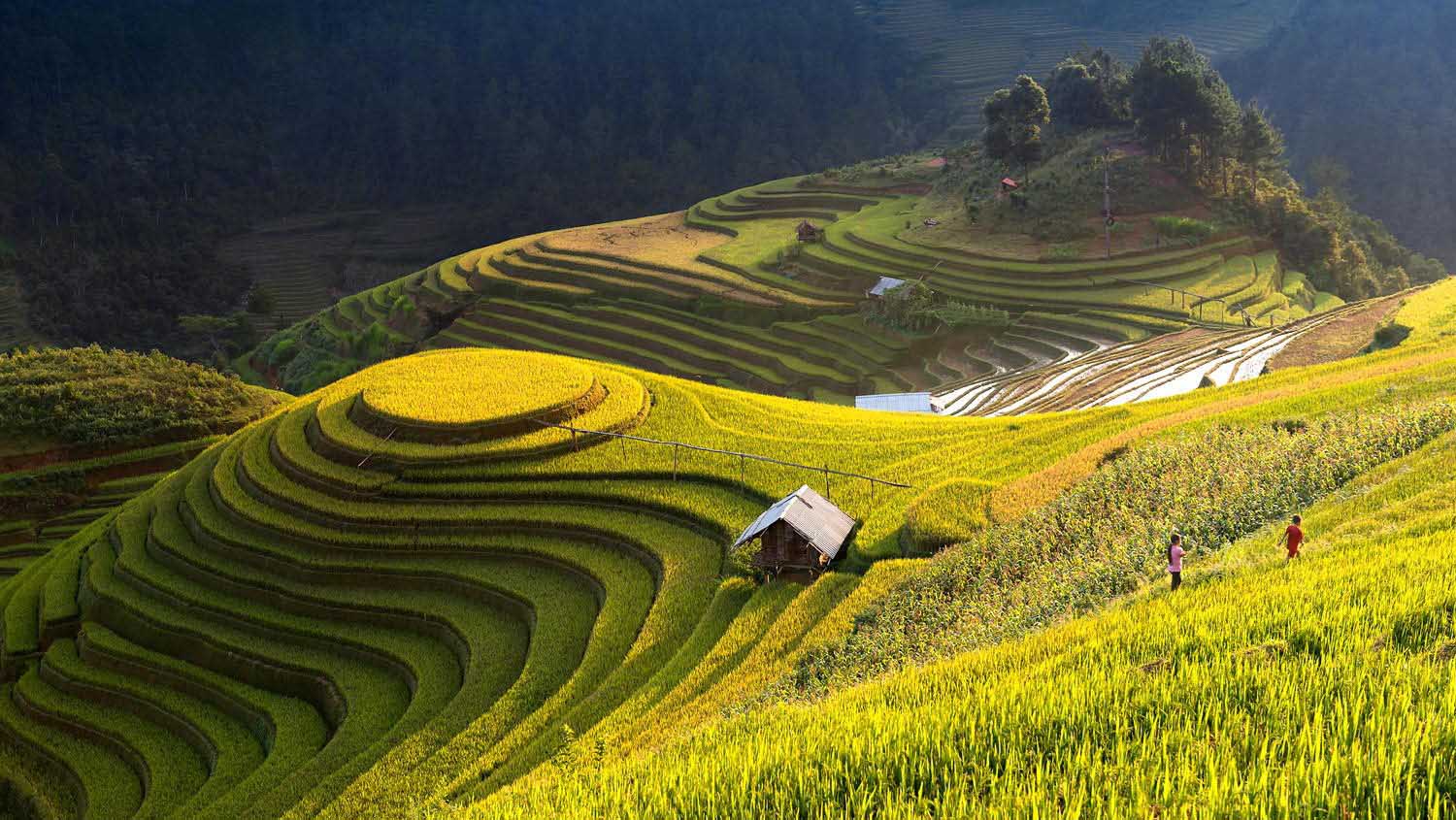
Terraced rice field amidst the rugged mountainous scenery
Famous hiking routes in Ha Giang:
-
Suoi Thau Plateau: Serene place surrounded by mountains and clouds.
-
Than Rock Cliff: A rugged trail offering impressive views of the majestic Ha Giang landscape.
-
Tay Con Linh Peak: The highest peak in Northeast Vietnam, where you can see a sea of clouds, flowers, and terraced fields.
-
Chieu Lau Thi Peak: For stunning sunrise views and visits to local homes.
Ninh Binh
Ninh Binh is not a challenging hiking route. It is ideal for hikers who want to enjoy a gentle hike while immersing themselves in the countryside beauty of Vietnam. Ninh Binh is surrounded by a series of low limestone mountains, forested hills, interspersed with rice fields and meandering waterways.
Notable hiking trails in Ninh Binh:
-
Cuc Phuong National Park: It is renowned for the butterfly season, the bear sanctuary, and chance to see species of langurs.
-
Tam Coc - Mua Cave: Tam Coc is one of the most beautiful routes to explore in Ninh Binh. Along the way, you can discover rice fields, lakes, local houses, temples, and enjoy a stunning overview from the top of Mua Cave.
-
Trang An - Bai Dinh: This path is ideal for enthusiasts exploring natural beauty paired with architectural and spiritual destinations. Bai Dinh is Ninh Binh's largest religious complex. It is set amidst serene landscapes.
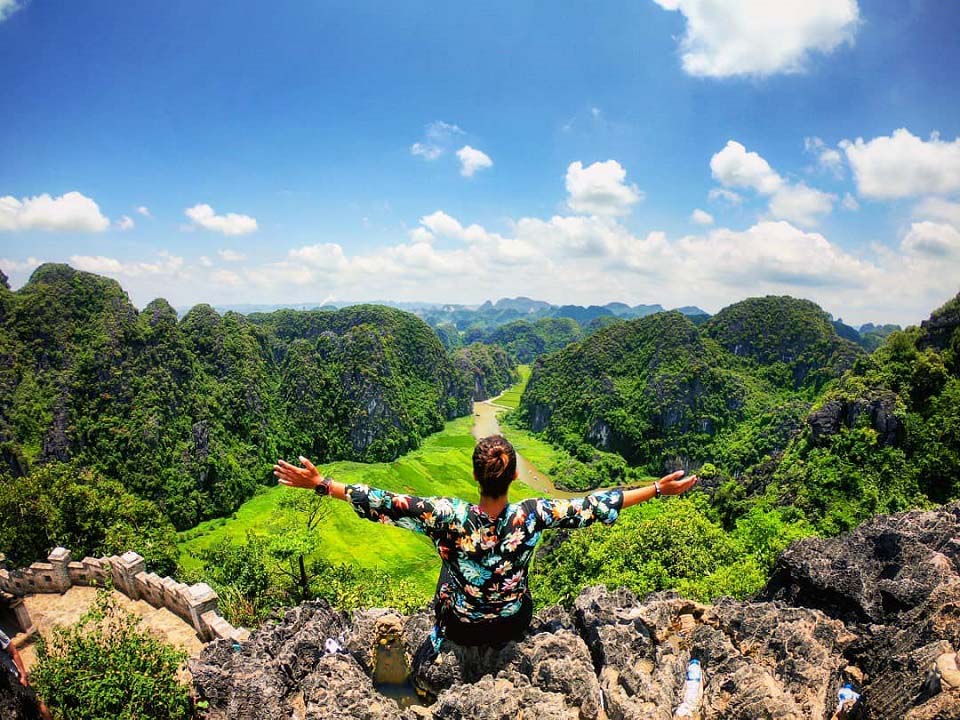
Valley view from the top of Mua Cave
Cat Ba Island
Cat Ba Island is part of the Gulf of Tonkin. It highlights a pristine forest ecosystem at Cat Ba National Park, recognized as a UNESCO Biosphere Reserve. While trekking through the forest, you can traverse untouched areas that are the realm of nature.
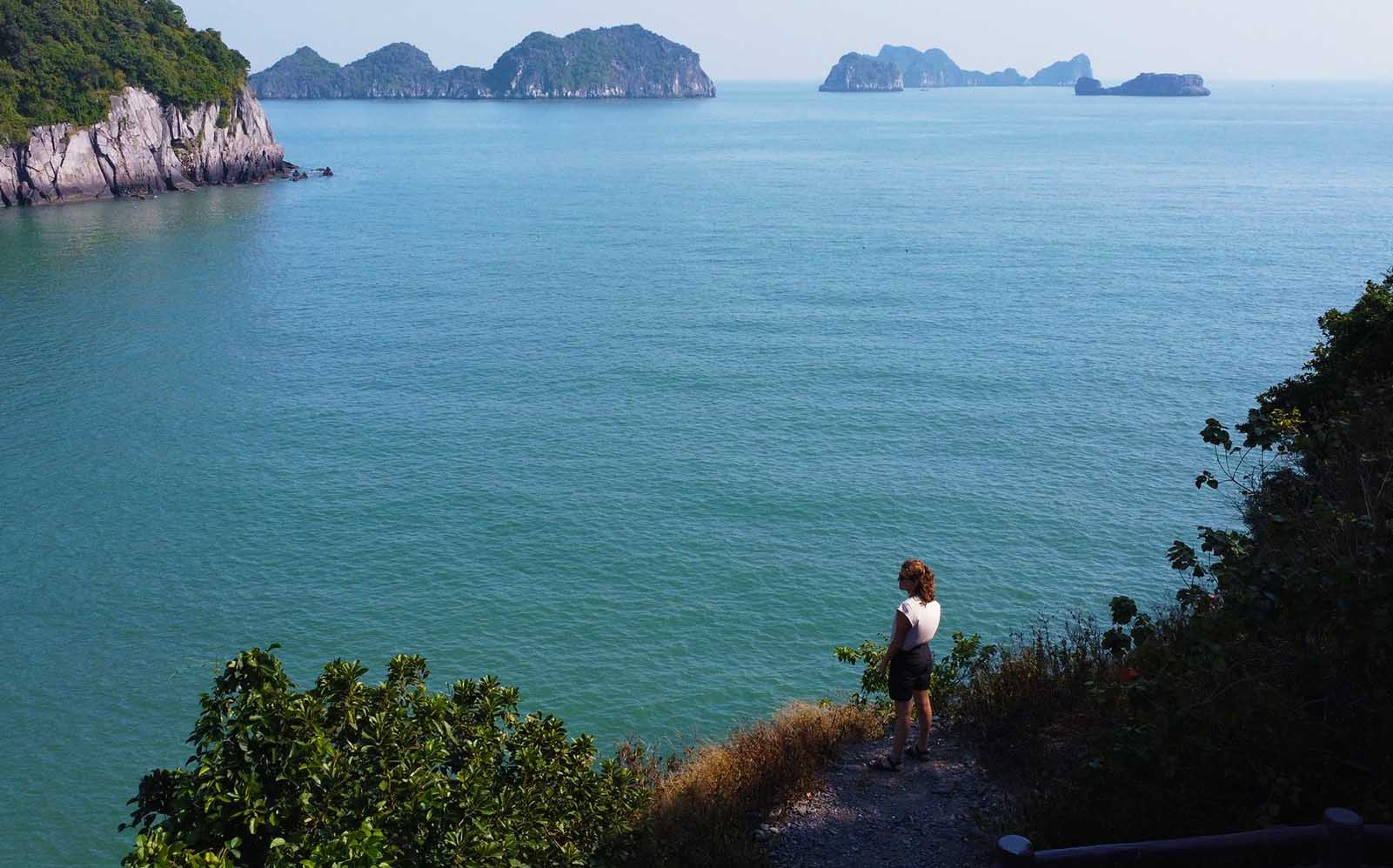
Hike through Cat Ba Island
From the mountain peaks here, you can also behold panoramic views of the island's natural landscapes and Lan Ha Bay in the distance. The journey concludes with a stop at the Viet Hai fishing village.
Quang Binh
Quang Binh is one of Vietnam's foremost destinations for ecotourism and adventure travel. This location is home to gigantic caves with unique geological formations, old-growth forests, refreshing streams, and intimate Vietnamese farms.
Top hiking routes in Quang Binh:
-
Phong Nha-Ke Bang National Park: This UNESCO World Heritage site is home to Son Doong Cave - currently the largest cave in the world.
-
En Cave: The cave is recognized as the third largest cave in the world, known for its pristine mountainous landscapes and absolute tranquility.
-
Duong Cam Waterfall: Having a day hike along this flowing stream is ideal for relaxation and enjoying the natural surroundings.
Da Lat
Da Lat is known as Vietnam's city of thousands of flowers, where nature is enveloped year-round in early morning mist and lush greenery. The scenery and life in Da Lat are gentle and dreamy, reminiscent of soft melodies.
In Da Lat, you can explore several hiking trails:
-
Bidoup Peak: Known as the roof of the Central Highlands, this journey offers a magnificent experience with pristine forests, waterfalls, and diverse wildlife.
-
Langbiang Peak: The second-highest peak in Bidoup National Park. You will enjoy stunning views of Da Lat city and the surrounding valleys.
-
Ta Nang - Phan Dung: This trail takes you through expansive grasslands, pine forests, and gentle hills. The landscape changes continuously, offering beautiful scenery along with terrain challenges.
Best Time to Hike in Vietnam
Normally, the best time for hiking in Vietnam is during the dry season. The rainy season can make trekking routes difficult and somewhat dangerous. However, the dry season in Vietnam varies between different locations. Let’s take a look at the table below:
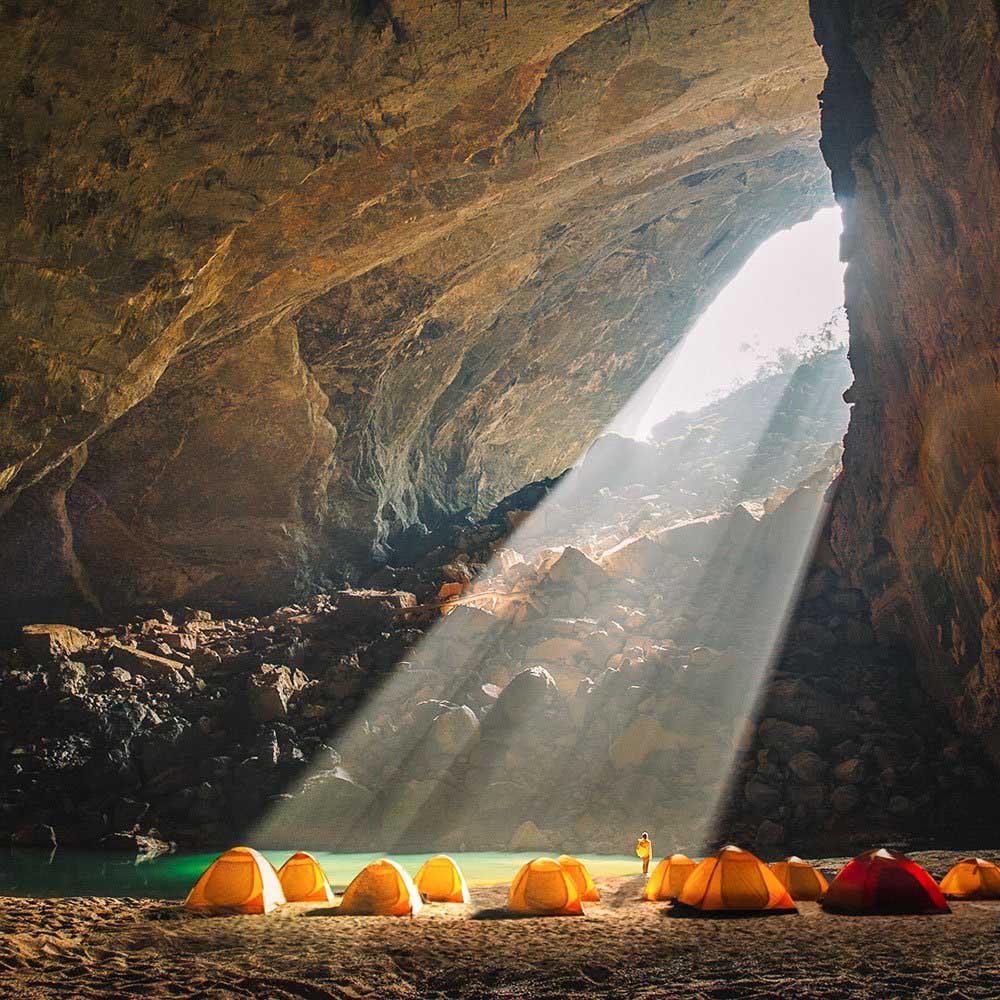
When to go hiking in Vietnam
|
Region |
Hiking Destinations |
Dry Season |
|---|---|---|
|
Northern Mountainous |
Sapa, Ha Giang, Yen Bai, Lai Chau, Cao Bang, Bac Kan… |
September - June |
|
Northern Delta |
Hai Phong, Quang Ninh, Ninh Binh… |
September - May |
|
Central |
Quang Binh, Pu Luong, Hue… |
Jan - August |
|
Central Highland |
Da Lat, Kon Tum, Gia Lai… |
December - April |
|
Southern |
Tay Ninh, An Giang… |
November - April |
Besides that, here is information on some of the best times for hiking at these spots:
-
Rice season in Sapa: August - October
-
Rice season in Tam Coc - Ninh Binh: May - June
-
Butterfly season in Cuc Phuong - Ninh Binh: April - May
-
Buckwheat flower season in Ha Giang: October - November
-
Flower season in the Northern mountainous region: February - March
-
Cherry blossom season in Da Lat: January - February
How to Start
When coming to Vietnam for hiking adventures, you will need to prepare a few things before starting:
-
Plan your trip: Research the hiking route you want to take and check the best season to go.
-
Find a guide: For simpler trails like Tam Coc in Ninh Binh, you can navigate on your own. However, in more remote areas like Sapa, Ha Giang, and Quang Binh, it is crucial to have a knowledgeable and experienced guide escort you for safety.
-
Research: by reading reviews and advice from experienced hikers.
-
Prepare your gear: Footwear, clothing, backpack, snacks, water, protective gear, navigation devices, first aid kit, etc., depending on the difficulty level and length of your hike.
-
Health: Ensure good physical and mental health and endurance.
Tips for Hikers
-
You can buy hiking gear in Vietnam, which is easier in specialized stores in major cities like Hanoi, Da Nang, and Ho Chi Minh City.
-
You should carry some Vietnamese Dong in cash for convenience, as many hiking areas may not have nearby ATM services.
-
Mobile phone signal coverage can be limited on remote trails.
-
You need to have international travel insurance before arriving in Vietnam.
-
If you want to book a hiking tour, it normally costs from 25 to 300 USD for tours ranging from half a day to 3 days.
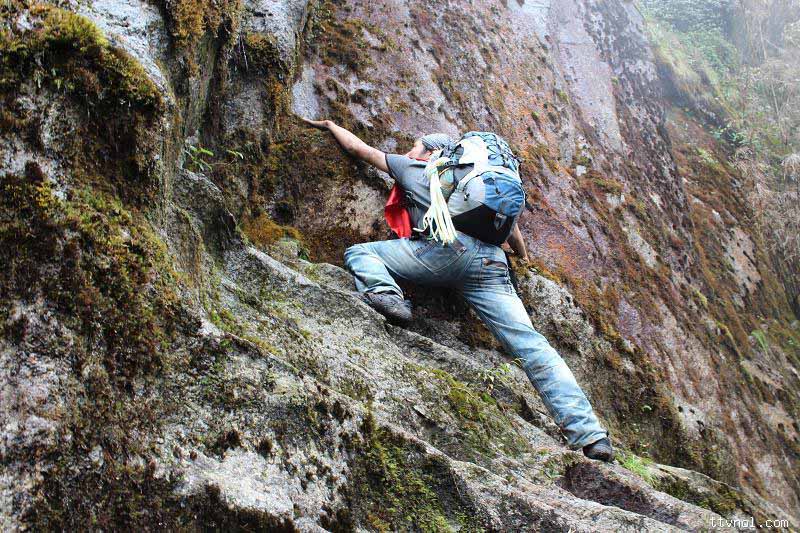
Advice for hiking in Vietnam
-
You should not eat fruits or drink stream water casually while trekking. Unless the local guide confirms that locals also consume them. It is still best to bring your own snacks and drinking water.
-
Vietnam's forests have many insects, so carry insect repellent or essential oils to repel them.
-
The chances of encountering dangerous animals such as tigers or bears while hiking in Vietnam are very minimal, but there is still a possibility of encountering small snakes.
-
If you decide to book a tour, ensure that the provider is reliable. You can also get in touch with us by leaving a message to book hiking tours.
To gain more insights, navigate to our post about travel guide to Vietnam!
These are the key insights into hiking in Vietnam, covering routes, optimal times to visit, and expert tips. We hope you have a seamless hiking journey to experience breathtaking scenery and explore the distinctive cultural elements of Vietnam.


